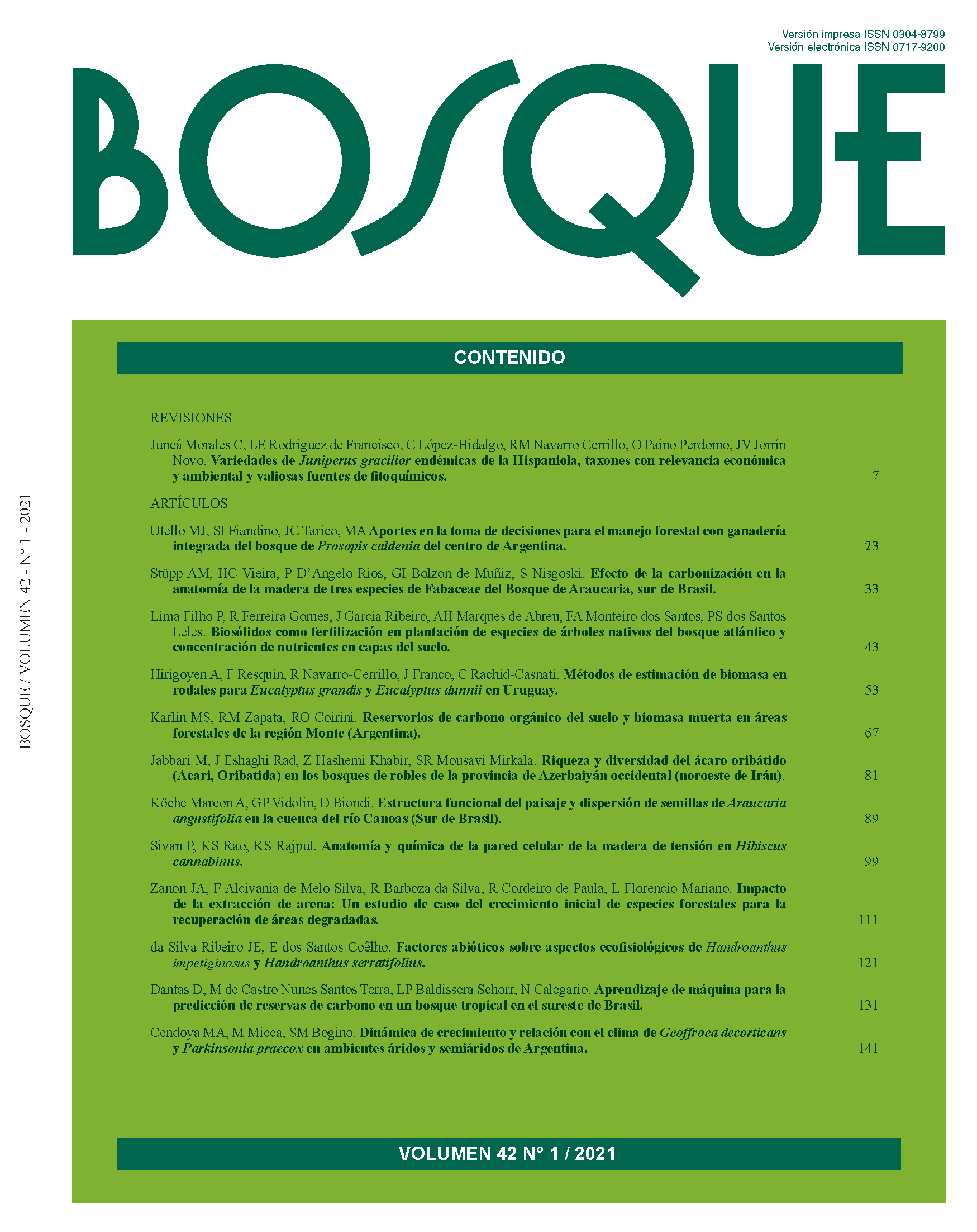Endemic Juniperus gracilior varieties of the Hispaniola island, tree taxa of environmental and economic relevance and a valuable phytochemical source
Conteúdo do artigo principal
Resumo
The Juniperus genus has long been used and studied for the chemical components of its aerial parts (leaves, bark, twigs) and their bioactivity. Nevertheless, these studies and their compilation have been primarily focused on Europe and North America distributed taxa, leaving the knowledge and economic potential of the endangered Caribbean taxa highly underrepresented in literature. Although, these conifers have been barely investigated for their bioactive compounds, bibliography does indicate the presence of potent antitumoral, anti-inflammatory and antimicrobial molecules such as deoxypodophyllotoxin, podophyllotoxin, amentoflavone and widdrol. Additional phytochemical potential can also be inferred from the systematical essential oil studies of the taxa, the only source of chemical composition information on most of them. These investigations can aid in the narrowing down of the possible bioactivities their lipidic extracts may possess, while also providing clues for the bioassays necessary to confirm them. This review aims to compile the known information on the usage, bioactivity and chemical composition of the Hispaniolian J. gracilior varieties and their phylogenetically proximal taxa (J. gracilior var. saxicola, J. barbadensis and J. bermudiana), to propitiate more holistic and in depth chemical studies on these potential phytochemical sources, in turn providing an economical incentive for their conservation.

